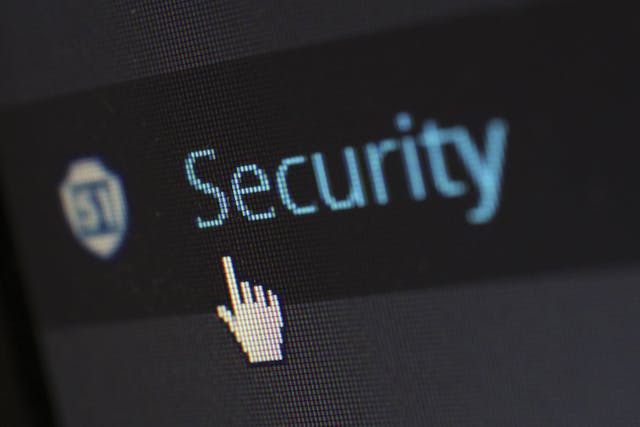Cyber threats provide both individuals and organizations with serious risks in the current digital ecosystem. Adopting preventive measures is crucial to protect against potential breaches and vulnerabilities as cyberattacks become more sophisticated and common. You can strengthen your digital resilience and shield private data from illegal access and misuse by following the fundamental dos and don’ts of cyber security.
Do’s
1. Regularly Update Software and Systems
Maintaining your operating systems, apps, and software up to date with security updates and patches is one of the core concepts of cyber security. To fix known vulnerabilities and weaknesses that cyber attackers could exploit, software makers regularly release patches. It is possible to reduce the likelihood of possible security lapses and shield your systems from abuse by maintaining software upgrades. Working with reliable cyber security services like 4BIS Cyber Security, can assist in protecting your system and streamline your security process.
2. Use Strong, Unique Passwords
One of the most important components of cyber security management is password security. Cybercriminals looking to access your accounts and sensitive data without authorization can easily target weak passwords. Using strong, one-of-a-kind passwords for all of your accounts and systems is crucial to improving password security. Usually, a strong password is made up of a mix of special characters, digits, and capital and lowercase letters. Avoid using passwords that are simple to figure out, such as “123456” or “password,” as these are among the most popular and readily cracked passwords.
3. Enable Multi-Factor Authentication (MFA)
Multi-factor authentication (MFA) provides another layer of security to your accounts by forcing users to submit several forms of verification before being granted access. Usually, multi-factor authentication (MFA) combines two factors: your possession (such as a hardware token or smartphone) and your knowledge (like a password). If your password is compromised, using multi-factor authentication (MFA) greatly lowers the likelihood of unwanted access.
4. Educate Employees About Cyber Security Best Practices
Security lapses and cyberattacks are mostly the result of human error. A culture of security awareness within your company can only be developed by teaching your staff about best practices for cyber security. Instruct staff members on prevalent cyber threats, phishing schemes, and social engineering techniques through thorough training and awareness campaigns. Staff members should be advised to use caution when opening attachments or accessing links from unidentified or dubious addresses.
5. Regularly Back Up Your Data
Data backups are critical components of any effective cyber security strategy. Having reliable backups ensures that, in the event of a system breakdown, data loss, or security incident, you can swiftly retrieve and restore your critical data. To guard against data loss from ransomware attacks, hardware malfunctions, or natural disasters, regularly backup your data to safe, off-site locations. Automated backup solutions can help you back up your data more quickly and reliably by streamlining the process.
Don’ts
1. Don’t Neglect Security Updates and Patches
Cybercriminals can take advantage of your systems if security updates and patches are not installed on time. Updating software and operating systems with security updates fixes known flaws and vulnerabilities, offering crucial defense against possible security breaches. The danger of unwanted access, data breaches, and system compromise increases when updates are not installed on time.
2. Don’t Use Default or Weak Passwords
The risk of unwanted access and security breaches is greatly increased when default or weak passwords are used. Because default passwords are frequently well-known and simple to figure out, hackers target them heavily. Steer clear of employing passwords that are derived from readily available data, such as names, birthdays, or dictionary words. Choose secure, one-of-a-kind passwords that are challenging to figure out or hack instead.
3. Don’t Click on Suspicious Links or Download Unknown Attachments
Cybercriminals frequently use phishing emails and harmful links to fool unwary users into disclosing personal information or installing malware on their computers. Avoid downloading attachments or clicking links from unidentified or dubious sources, as these could result in identity theft, malware infections, or data breaches. When responding to emails, proceed with caution, particularly if they ask for sensitive information or require you to take immediate action.
4. Don’t Rely Solely on Antivirus Software for Protection
Antivirus software is essential for identifying and eliminating malware from your computers, but it shouldn’t be your only security against online threats. Antivirus software can miss freshly emerging or zero-day assaults because it is only effective against known threats. Proactive security tools like firewalls, endpoint security software, and intrusion detection systems can be added to your antivirus defense.
5. Don’t Ignore Security Alerts and Indicators
Security indicators and warnings offer important information about possible security risks and malicious activity directed at your networks and systems. Cybercriminals can exploit and compromise your organization if you choose to ignore or disregard security alerts. Pay close attention to security alerts and look into any unusual or suspicious activity right once. Install automated systems for monitoring and alerting that are capable of quickly identifying and handling security incidents.
Conclusion
Developing a proactive, knowledgeable strategy to reduce risks and vulnerabilities is essential to mastering cyber security. You can bolster your organization’s defenses against emerging cyber threats and protect sensitive data from unauthorized access and exploitation by abiding by fundamental cyber security dos and don’ts. A thorough and customized strategy for safeguarding your digital assets and upholding a robust security posture is guaranteed when you collaborate with respectable cybersecurity providers.
